Table of Contents

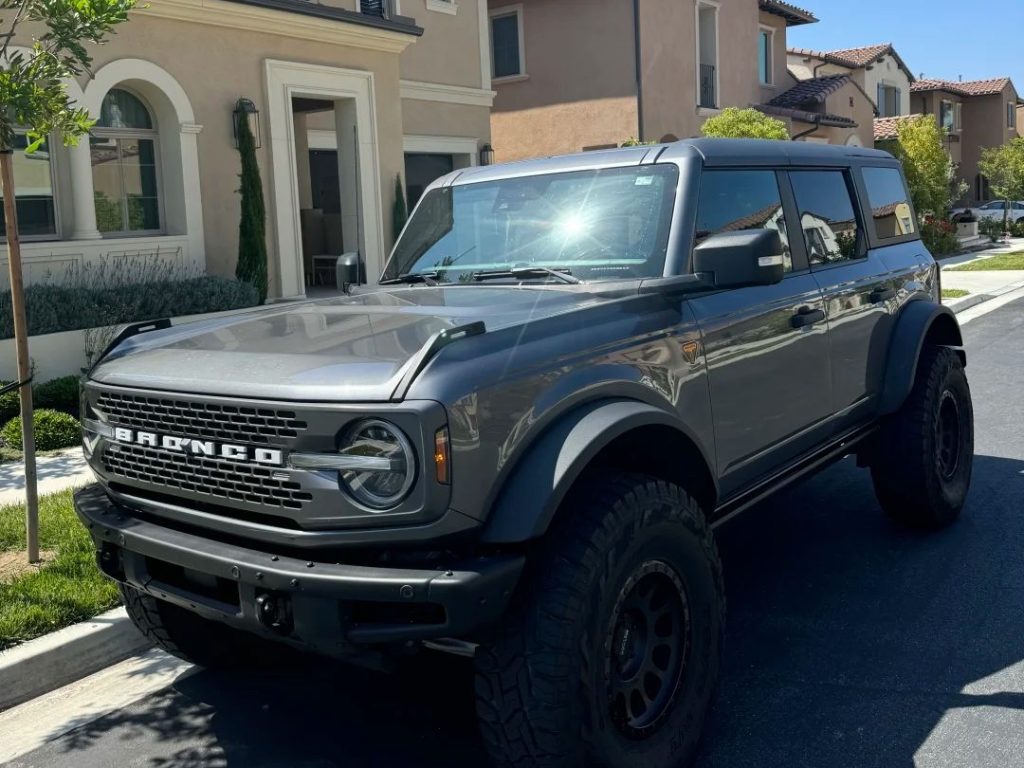
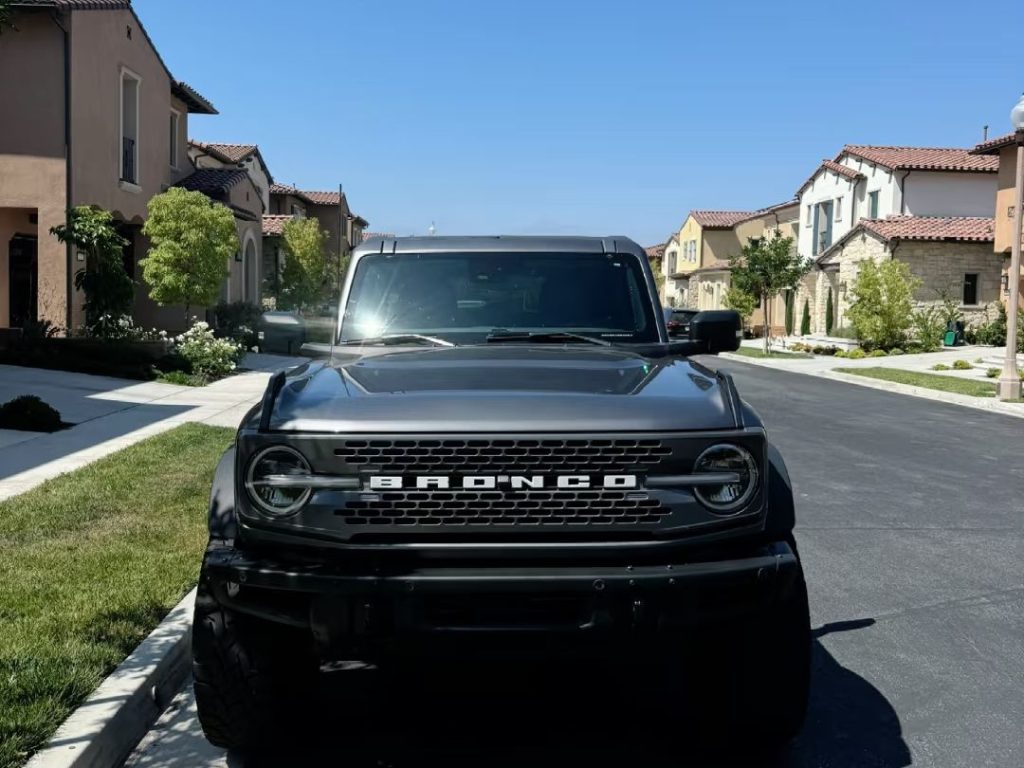
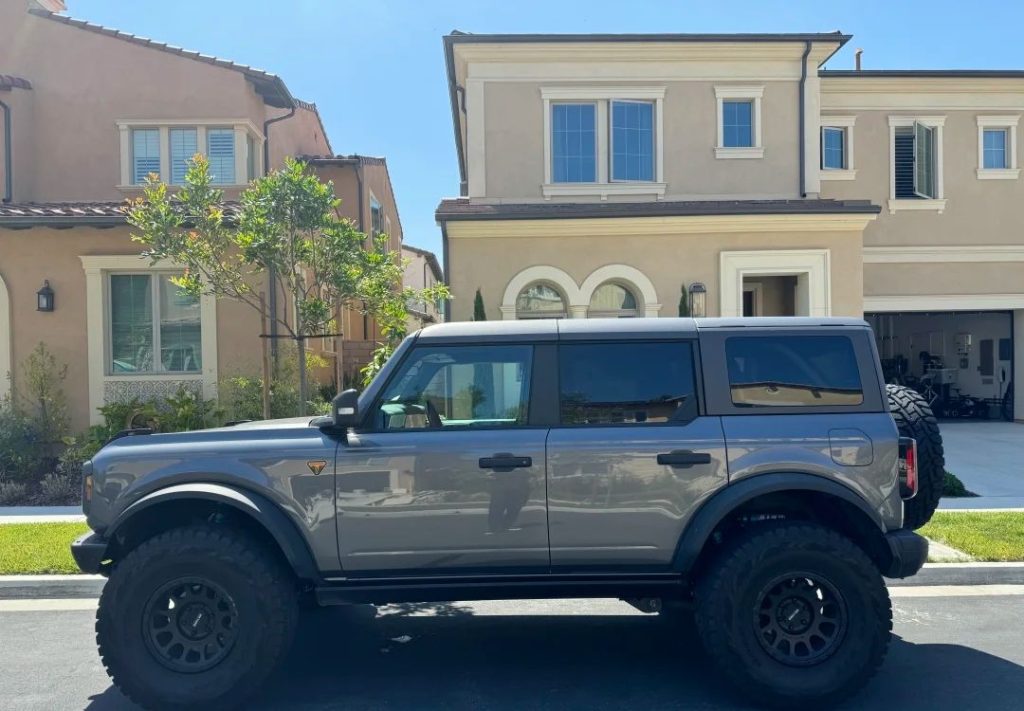
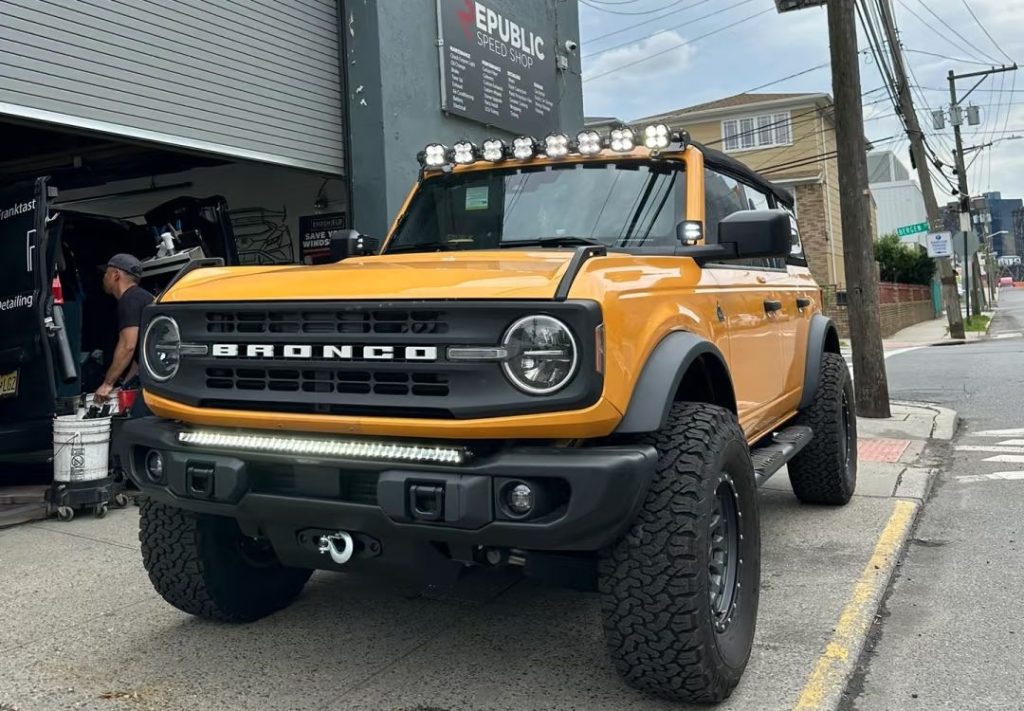
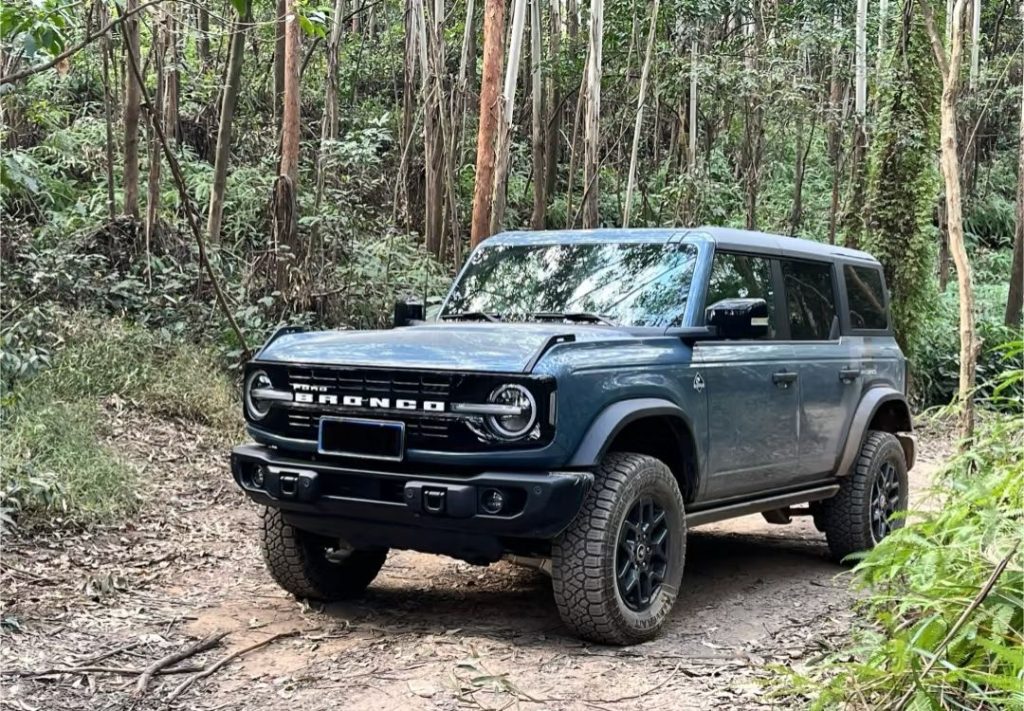
Common issues reported by owners of used ford broncos
If you’re considering a used Ford Bronco, it’s wise to research the model’s reliability track record. While the reborn Bronco (2021-present) has gained a loyal fanbase for its off-road prowess and retro-modern design, owners have flagged several recurring concerns. Here’s a breakdown of the most frequently reported problems with used Ford Broncos, based on forum discussions, NHTSA complaints, and repair trends.
Engine Performance and Turbocharger Reliability
The used Ford Bronco’s optional 2.7L EcoBoost V6 engine, while powerful, has drawn criticism for turbocharger-related issues. Owners of 2021-2022 models report occasional turbo lag, sudden power loss, or whistling noises under acceleration. Some attribute this to carbon buildup in direct-injection engines or faulty wastegate actuators. While Ford issued technical service bulletins (TSBs) addressing early software glitches, buyers of used Ford Broncos should verify if these updates were applied. Mechanics recommend checking for oil leaks around the turbo seals and ensuring proper maintenance intervals to avoid costly repairs.
Soft Top and Hardtop Roof Leaks
A signature feature of the used Ford Bronco is its removable roof panels, but water intrusion complaints are rampant. Soft-top versions often develop leaks around the rear windows or seams during heavy rain, while hardtop models may have misaligned panels causing wind noise or drips. Forum users note that repeated adjustments at dealerships don’t always resolve the issue, and some resort to aftermarket sealing kits. Before purchasing a used Ford Bronco, inspect the roof for cracks, worn seals, or signs of water damage in the cabin—especially under floor mats or near electrical components.
Electrical Gremlins and Infotainment Glitches
Modern Broncos pack advanced tech, but their SYNC 4 infotainment systems aren’t immune to bugs. Used Ford Bronco buyers frequently mention frozen screens, unresponsive touch controls, or sudden reboots. More concerning are sporadic reports of safety systems like the pre-collision assist or trail control malfunctioning due to faulty sensors or wiring harness issues. While many problems are fixable via software updates, ensure the vehicle’s recall history (e.g., 2022’s camera/power steering recall) is fully addressed.
Suspension and Steering Wear in Off-Road Models
The used Ford Bronco’s off-road capabilities come with trade-offs. Sasquatch Package-equipped models, with their lifted suspension and 35-inch tires, often exhibit premature wear in ball joints and tie rods if driven aggressively. Some owners report clunking noises or loose steering feel after 20,000+ miles. Independent mechanics advise checking for uneven tire wear and testing the 4×4 system’s engagement in a used Ford Bronco, as faulty transfer cases or electronic sway bar disconnects can lead to expensive driveline repairs.
Final Tips for Shoppers
While the used Ford Bronco remains a compelling choice for adventure seekers, its quirks demand diligence. Always review maintenance records, prioritize models with remaining factory warranty, and invest in a pre-purchase inspection focusing on the roof, turbo, and suspension. Forums like Bronco6G.com reveal that many issues are manageable with proactive care—but knowing what to look for can save you from inheriting someone else’s headaches.




Essential inspections before buying a used ford bronco
Purchasing a used Ford Bronco can be an exciting step toward owning a rugged, adventure-ready vehicle. However, its off-road heritage and complex design mean thorough inspections are critical to avoid costly surprises. Below are key areas to evaluate when considering a used Ford Bronco, whether it’s a classic model or the modern reboot (2021-present).
Engine and Transmission Health Check
The heart of any used Ford Bronco is its powertrain. For newer models equipped with EcoBoost engines (2.3L or 2.7L), pay attention to turbocharger performance. Listen for unusual whistling or grinding noises during a cold start, which could indicate worn turbo bearings or carbon buildup. Request maintenance records to confirm regular oil changes—critical for these direct-injection engines. Test-drive the vehicle at varying speeds to ensure smooth shifts in the 10-speed automatic transmission; hesitation or jerking might signal solenoid or software issues. For older Broncos, check for oil leaks around the engine block and inspect the manual transmission’s clutch engagement.
Frame and Undercarriage Examination
A used Ford Bronco’s underbody often tells the story of its life. Look for signs of off-road abuse: deep scratches, bent skid plates, or rust on the frame (especially in salt-belt states). Modern Broncos with factory skid plates should have them removed during inspection to check for hidden damage. Pay special attention to the suspension components—ball joints, control arms, and bushings on Sasquatch Package models are prone to premature wear if driven hard. Rusty or corroded bolts around the modular bumper or tow hooks may indicate exposure to harsh conditions.
Roof and Weatherproofing Integrity
One of the most common complaints with used Ford Broncos involves water leaks. Inspect the roof thoroughly—soft tops should show no tears or loose stitching, while hardtops must have intact seals and properly aligned panels. Pour water over the roof or use a hose to simulate rain, checking the cabin floor, door sills, and rear cargo area for moisture. Stains or moldy odors suggest unresolved leakage issues. For Broncos with removable doors, ensure the electrical connectors for side mirrors and speakers are undamaged and functional.
Electrical System and Tech Verification
Modern used Ford Broncos rely heavily on electronics. Test all features: the SYNC 4 infotainment screen should respond quickly without freezing, and driver-assist systems like adaptive cruise control must engage reliably. Check for error messages related to the 4×4 system or sway bar disconnect, which could indicate wiring faults. Inspect the battery health (especially in hybrids) and verify that software updates were applied to address past recalls, such as the 2022 camera malfunction fix.
Test-Drive: On-Road and Off-Road Behavior
A used Ford Bronco should feel capable in multiple environments. On pavement, note steering responsiveness—excessive play or vibrations at highway speeds might point to alignment or tire issues. Find a gravel or uneven surface to test the 4×4 system; engage each drive mode (Normal, Sport, Mud/Ruts) to ensure smooth transitions. Listen for clunking noises from the suspension during bumps, which could warn of worn shocks or bushings. If possible, test hill descent control and trail turn assist to confirm these off-road features are operational.
Professional Inspection and Documentation
Even if a used Ford Bronco appears flawless, invest in a pre-purchase inspection by a mechanic specializing in off-road vehicles. They can perform a compression test on the engine, scan for hidden fault codes, and assess the differential and transfer case fluids. Always request a vehicle history report (Carfax or AutoCheck) to rule out accidents, flood damage, or odometer discrepancies. For Broncos still under factory warranty, confirm transferability and remaining coverage.



How to determine a fair price for a used ford bronco in the U.S. market
When shopping for a used Ford Bronco in the U.S., understanding how to evaluate its fair market value is crucial to avoid overpaying. The Bronco’s resurgence since 2021 has created a dynamic used car market, with prices varying widely based on trim, mileage, and condition. Start by researching current listings on platforms like Autotrader, Cars.com, and enthusiast forums such as Bronco6G. These sources provide a baseline for what sellers are asking, but remember that listed prices often include room for negotiation.
Pay attention to trends: newer used Ford Broncos (2021-2023) with lower mileage and popular trims like Badlands or Wildtrak typically command premiums, while older models or those with high mileage may see significant depreciation. For example, a 2022 Bronco Badlands with 15,000 miles might list for 48,000,whereasa2021Basemodelwith40,000milescoulddropto35,000.
A used Ford Bronco’s configuration heavily impacts its value. Broncos equipped with the Sasquatch Package (35-inch tires, lifted suspension) or Lux Package (leather seats, advanced tech) often retain value better than base models. However, modifications can be a double-edged sword. Consider a case where two similar 2021 Broncos are priced at $42,000: one is stock, while the other has aftermarket off-road lights, a winch, and a lifted suspension. The modified Bronco might appeal to an enthusiast but could also signal heavy off-road use, leading some buyers to question hidden wear.
Always verify if modifications were professionally installed and whether they align with your intended use. A used Ford Bronco with a documented history of light trail use in Arizona, for instance, might justify a higher price than one from Michigan with unverified modifications and potential rust issues.
Mileage and maintenance history are critical factors in pricing. A used Ford Bronco with 30,000 miles that has undergone regular servicing at a Ford dealership will generally be priced higher than a similar model with 50,000 miles and spotty maintenance records. Request the vehicle’s CARFAX or AutoCheck report to check for accidents, flood damage, or title issues. For example, a 2021 Bronco Outer Banks with 25,000 miles and a clean history might sell for 43,000,butifthereportrevealsaminoraccident(repairedatacertifiedshop),thepricecoulddropto38,000. Broncos from rust-prone regions like the Midwest or Northeast may have undercarriage corrosion, which can affect long-term reliability and resale value. If the seller lacks documentation, consider budgeting for a pre-purchase inspection (150−300) to assess mechanical and structural integrity.
Market timing also plays a role. Used Ford Broncos tend to sell at higher prices during spring and summer, when demand for off-road vehicles peaks. Conversely, shopping in fall or winter might yield better deals. Additionally, regional scarcity affects pricing. In areas with limited inventory, such as rural states or coastal cities, sellers may inflate prices due to low supply. Cross-reference national averages using tools like Kelley Blue Book (KBB) or Edmunds to identify outliers. For instance, a used 2023 Bronco Wildtrak in Denver listed at 55,000mightalignwithlocaldemand,butthesamemodelinMiamipricedat60,000 without justification (e.g., rare trim or extras) could be overvalued.
Finally, leverage negotiation tactics rooted in data. If a used Ford Bronco has been listed for over 60 days, the seller may be more open to price adjustments. Politely highlight comparable listings or recent sales to justify your offer. For private sellers, emphasize the convenience of a quick sale; for dealerships, inquire about certified pre-owned (CPO) options or warranty extensions that add value. Remember, a fair price balances the vehicle’s condition, market trends, and your budget—never let enthusiasm override due diligence. By systematically analyzing these factors, you’ll confidently navigate the used Ford Bronco market and secure a deal that reflects true worth.
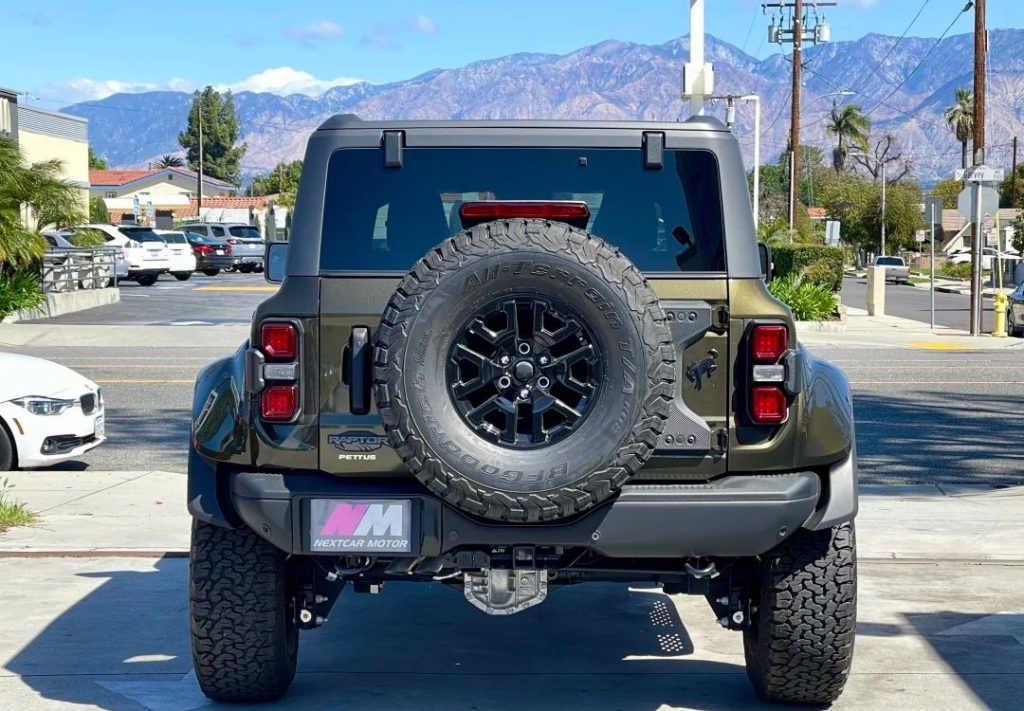
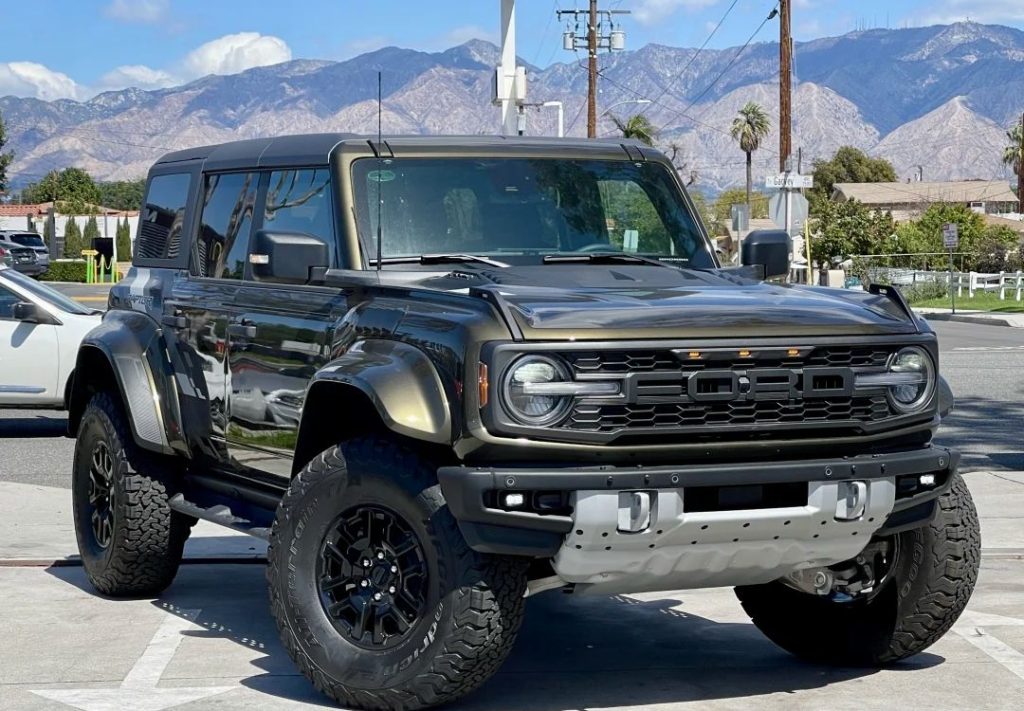
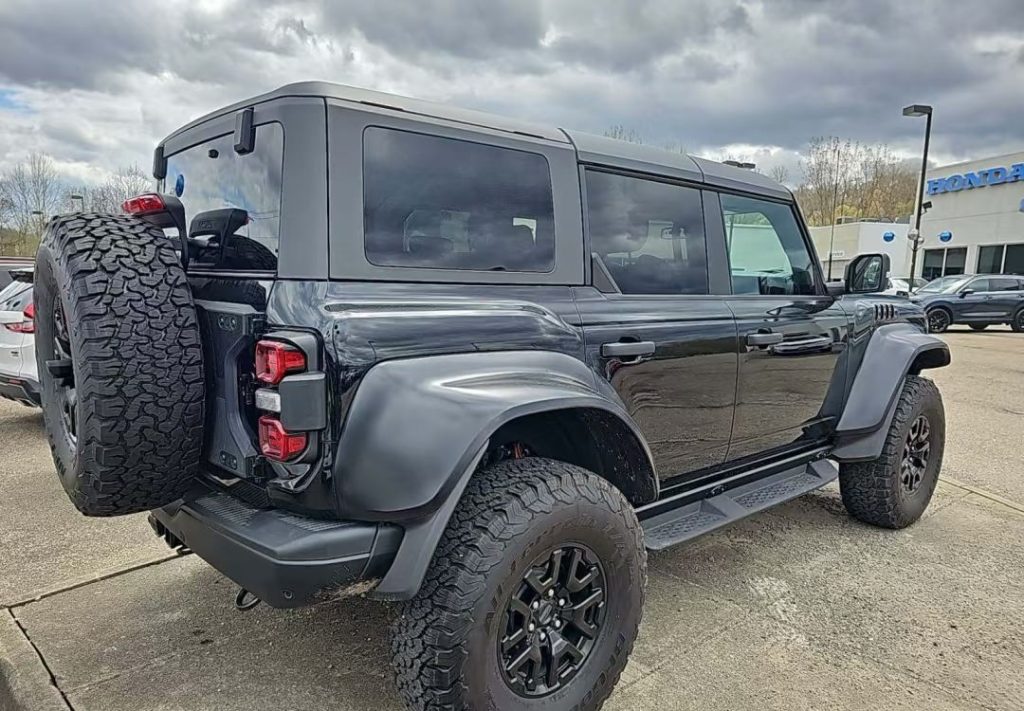
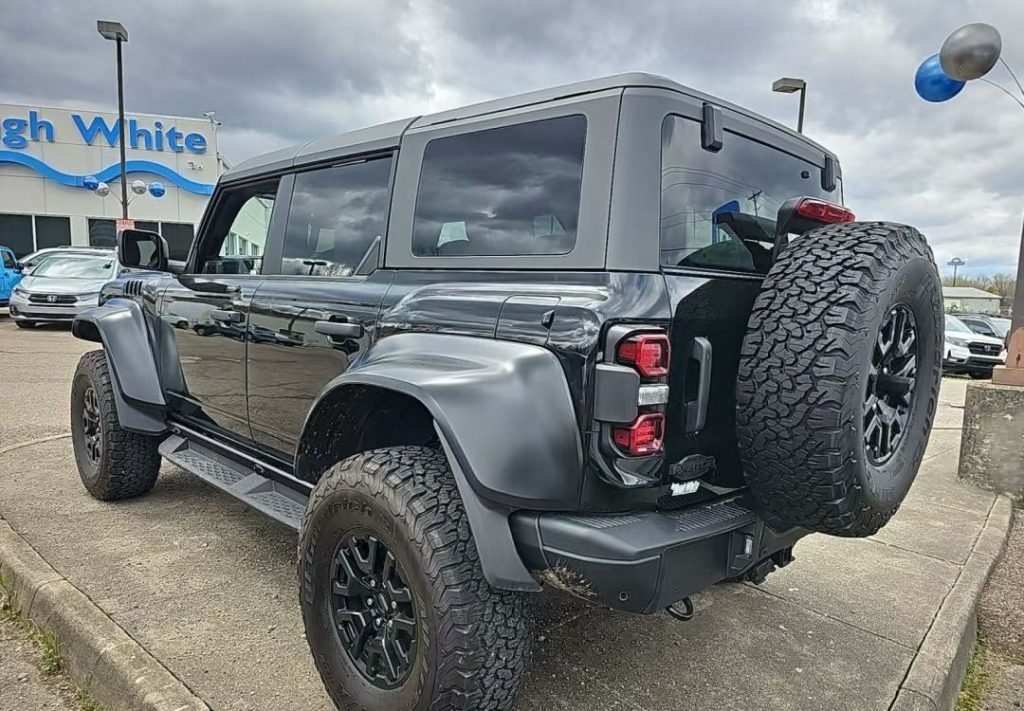
Key wear-and-tear components to monitor in a used ford bronco
If you’re eyeing a Ford Bronco for sale, understanding its common wear points can help you maintain its rugged charm and avoid costly repairs. The Bronco’s off-road DNA means certain components endure more stress than average vehicles. Here’s a breakdown of critical parts to inspect regularly, whether you’re driving a classic model or the modern reboot.
The Ford Bronco’s suspension system—especially in off-road trims like the Sasquatch Package—is designed for toughness but not immune to wear. Ball joints, control arm bushings, and tie rods are prone to accelerated degradation if the vehicle has been used heavily on rocky trails or uneven terrain. Look for signs of looseness in the steering wheel or clunking noises over bumps, which may indicate worn bushings.
Models with the factory-installed electronic sway bar disconnect should have this feature tested periodically, as failure can lead to unstable handling. Owners of lifted Broncos should also check for aftermarket suspension parts that may lack the durability of OEM components.
One of the most frequent complaints among Ford Bronco owners involves roof leaks. Soft tops, while convenient for open-air adventures, are susceptible to fraying seams, zipper issues, and weatherstrip degradation over time. Hardtop versions aren’t exempt—misaligned panels or cracked seals around removable roof sections can let water seep into the cabin. After heavy rain, inspect the floor mats, door sills, and cargo area for moisture. Proactively applying silicone-based protectants to seals can extend their lifespan. If you’re evaluating a Ford Bronco for sale, a water test (using a hose) is a practical way to spot hidden leaks.
Modern Broncos equipped with EcoBoost engines (2.3L or 2.7L) rely on turbochargers for power, but these components demand attention. Carbon buildup in direct-injection engines can lead to turbo lag or premature failure if oil changes are neglected. Listen for unusual whistling or grinding noises during acceleration, which might signal worn turbo bearings. Additionally, check the intercooler and charge pipes for cracks or loose connections, common issues in vehicles subjected to extreme temperature swings. For older Broncos with naturally aspirated engines, valve cover gaskets and timing chain tensioners are known wear items that require periodic inspection.
The Ford Bronco’s tech-heavy interior introduces vulnerabilities in its electrical systems. Faulty trail turn assist sensors, intermittent backup camera glitches, and unresponsive infotainment screens are frequently reported in forums. Moisture intrusion from roof leaks can exacerbate wiring harness corrosion, leading to erratic behavior in driver-assist features like adaptive cruise control. Regularly updating the SYNC software and ensuring battery terminals are clean and secure can mitigate some issues. When test-driving a Ford Bronco for sale, cycle through all drive modes (Normal, Sport, Baja) to confirm the terrain management system engages properly.
Aggressive off-road tires equipped on many Broncos—such as the Sasquatch Package’s 35-inch Goodyear Territory MTs—wear faster on pavement and may develop uneven tread patterns if alignment is off. Rotate tires every 5,000–7,000 miles and check for sidewall damage from rock crawling. Brake components also face added strain due to the Bronco’s weight and off-road use. Warped rotors or squeaky pads are red flags, especially in models without heavy-duty brake upgrades.
A Ford Bronco for sale might seem bulletproof, but its longevity hinges on proactive care. Stick to factory-recommended service intervals for fluids (differential, transfer case) and address minor issues before they escalate. Document all repairs and modifications—this not only aids maintenance but also boosts resale value. Whether you’re tackling trails or cruising highways, respecting the Bronco’s mechanical limits will keep it running strong for years to come.
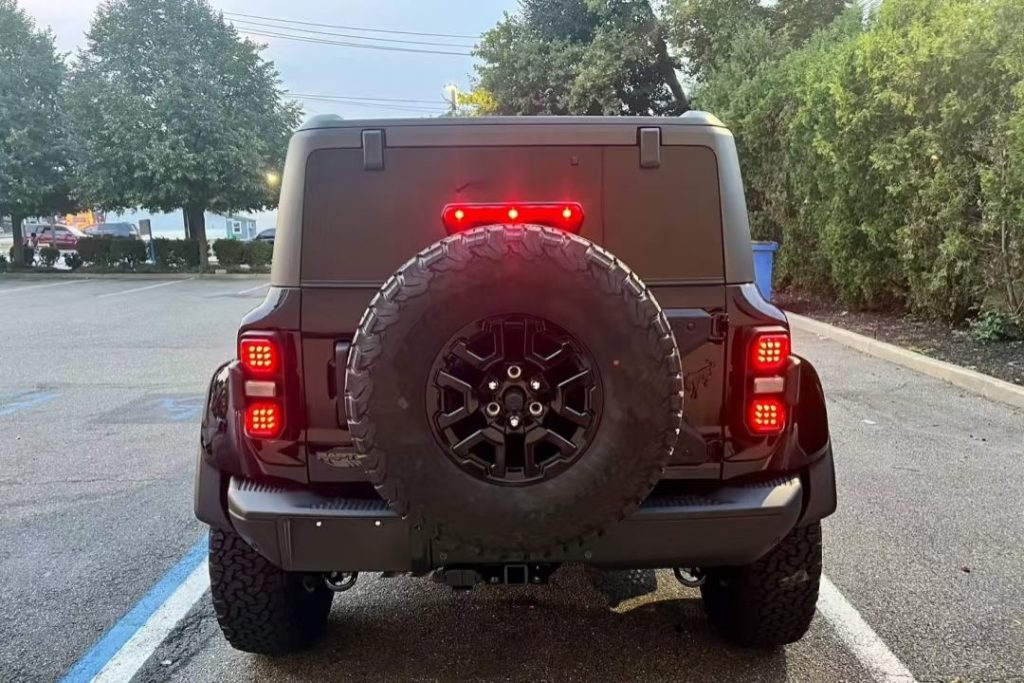
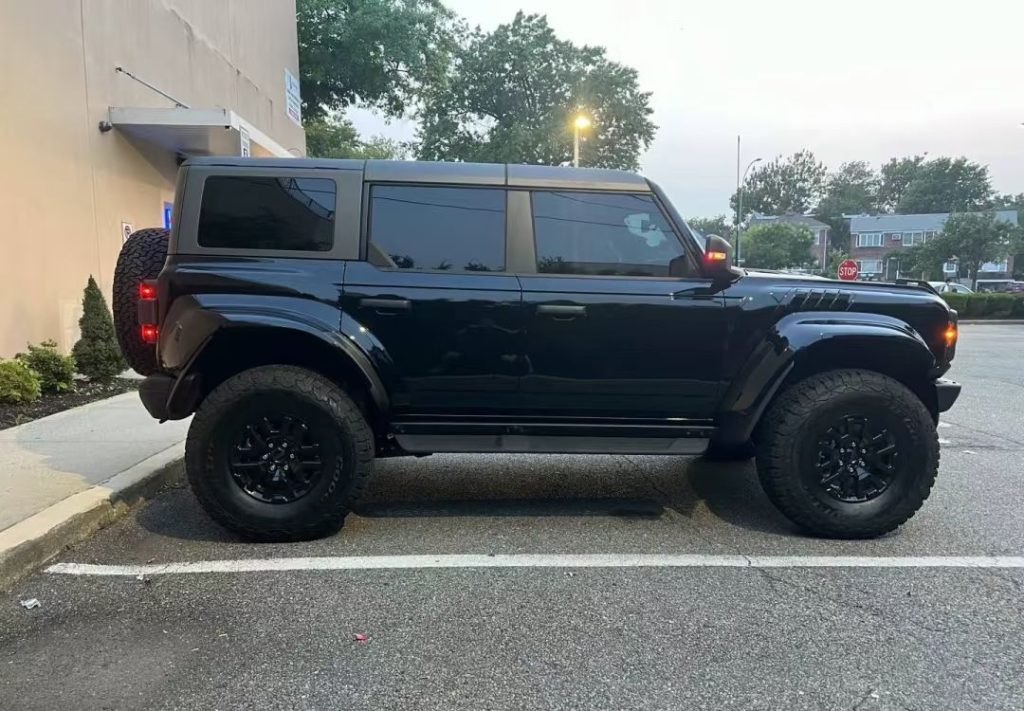
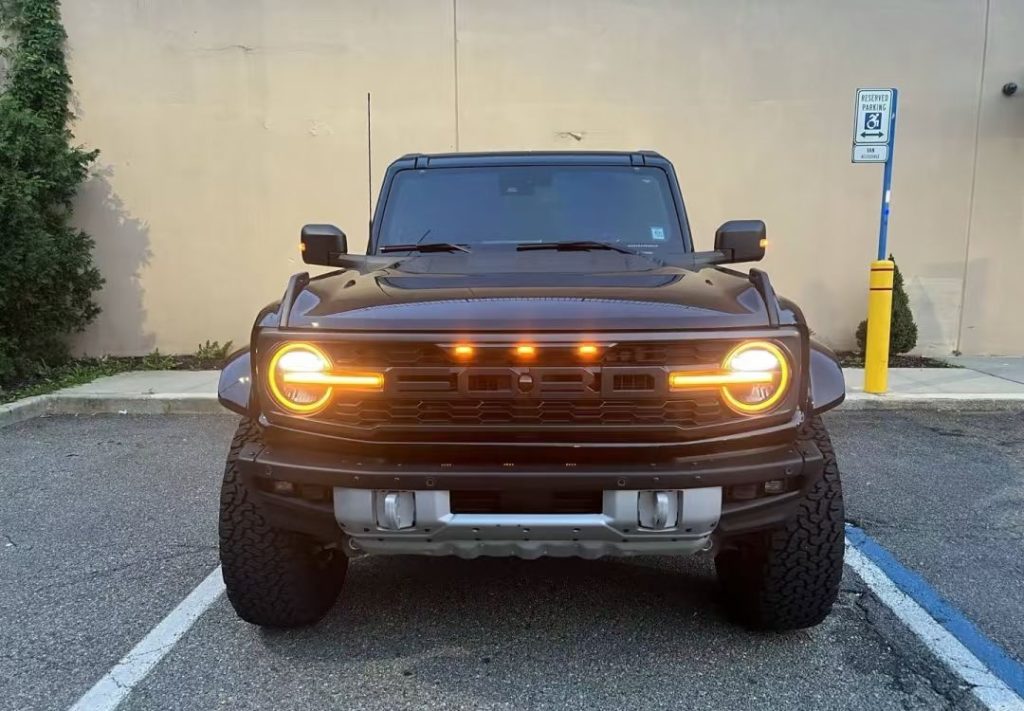
Where to find a ford bronco for sale: U.S. sales Channels explained
If you’re searching for a Ford Bronco for sale in the U.S., understanding the most common sales channels can streamline your hunt. Both online and offline platforms cater to different buyer priorities—whether you value convenience, price transparency, or hands-on inspection. Here’s an objective breakdown of where these rugged SUVs typically appear on the market.
Online Marketplaces: The Digital Showroom
Websites like Cars.com, Autotrader, and CarGurus dominate the online market for used Ford Broncos. These platforms allow sellers (dealers and private owners) to list vehicles with detailed photos, vehicle history reports, and price comparisons. For example, a Ford Bronco for sale on Autotrader might include a dealer-certified 2022 Badlands trim with 20,000 miles, priced competitively against similar listings nationwide. Niche sites like Bring a Trailer or Cars & Bids cater to enthusiasts, often featuring rare or well-maintained Broncos with bidding formats. Social media groups (Facebook Marketplace, Bronco-specific forums like Bronco6G) are also popular, especially for modified models or local sales. However, always verify listings through VIN checks to avoid scams.
Dealerships: Certified Pre-Owned and Trade-Ins
Ford dealerships and certified pre-owned (CPO) programs are go-to channels for buyers prioritizing reliability. Many dealerships list Ford Broncos for sale that have undergone rigorous inspections and include extended warranties. For instance, a Ford CPO Bronco might cost 10-15% more than a private sale but offers peace of mind with factory-backed coverage. Independent used car lots also stock Broncos, though these may lack certification. Dealerships often have trade-ins from Bronco owners upgrading to newer models, so visiting in person can uncover unadvertised deals.
Auction Platforms: Bargains and Risks
Physical and online auctions like Manheim or Copart attract dealers and savvy buyers hunting for deals. Repossessed, lease-return, or lightly damaged Broncos often appear here. A Ford Bronco for sale at auction might be listed as “clean title” or “salvage,” with bidding starting below market value. While auctions can yield bargains, they require expertise—vehicles are usually sold “as-is,” and pre-bidding inspections are limited. Platforms like eBay Motors blend auction and fixed-price formats, offering a middle ground for remote buyers.
Private Sellers: Local Listings and Enthusiast Networks
Private sales via Craigslist or local classifieds appeal to budget-conscious buyers. A Ford Bronco for sale by a private owner might lack warranty but could be priced lower than dealer listings. Enthusiast communities, such as Bronco clubs or off-road forums, are goldmines for well-maintained models. Sellers in these circles often provide detailed maintenance records and mod histories. For example, a Bronco6G forum member might list their Sasquatch-equipped 2021 model with aftermarket upgrades, targeting fellow enthusiasts who value customization.
Specialty Retailers and Custom Shops
Businesses specializing in off-road vehicles often curate used Ford Broncos with aftermarket upgrades. These retailers, like Texas-based 4WD shops or California custom garages, cater to buyers seeking turnkey trail-ready rigs. While prices are higher, these Broncos typically include professional installations of lifts, winches, or performance exhausts. Such shops may also offer financing options unavailable in private sales.




The Legacy of the Ford Bronco: From Off-Road Pioneer to Modern Icon
The Ford Bronco first roared onto the scene in 1966 as a direct response to the growing popularity of rugged, go-anywhere vehicles like the Jeep CJ-5 and International Harvester Scout. Designed to blend everyday drivability with off-road capability, the original Bronco featured a compact, body-on-frame design, removable doors, and a short wheelbase perfect for tackling trails. Over its initial 30-year run, the Bronco evolved through five generations, cementing its reputation as a versatile workhorse.
The second-generation model (1978–1979) introduced a larger, full-size chassis to compete with trucks like the Chevrolet Blazer, while the iconic fifth-gen “O.J. Simpson era” Bronco (1992–1996) became a cultural lightning rod—both admired for its bold styling and infamous for its role in the 1994 highway chase. Despite its loyal fanbase, declining sales led Ford to discontinue the Bronco in 1996, leaving a void in the off-road market.
In 2017, Ford reignited the Bronco’s legacy by announcing its return, capitalizing on nostalgia and the booming SUV market. The reborn 2021 Ford Bronco marries retro styling with cutting-edge tech, offering two- and four-door configurations, removable roof panels, and class-leading features like the Terrain Management System. Modern trims like the Badlands and Wildtrak cater to hardcore off-roaders with factory-installed 35-inch tires and front locking differentials.
For buyers seeking flexibility, Ford Bronco lease programs have made it easier to experience this icon without long-term commitment, with options tailored to adventure seekers who want low monthly payments and access to the latest upgrades. Today’s Bronco isn’t just a vehicle—it’s a lifestyle symbol, backed by Ford’s push into electrification and a dedicated community ensuring its place in automotive history.
MORE:used toyota camry

